The Zeitgeist of the Guanyin Ideology
【Background】
Of legends and anecdotes associated with Bodhisattva Avalokitesvara, otherwise known as Bodhisattva Guanyin in Chinese Buddhism, sayings and descriptions such as ‘Relief of suffering upon chanting the name of Guanyin’ and ‘Guanyin blessing all three thousand cosmic universes at once by sprinkling droplets of holy water with a willow branch’ are widespread and most popular. Included in the plural universes is also our world, and the depiction of Bodhisattva Guanyin in China is mostly done as a female holding a holy water-containing vase in one hand and a willow branch in the other. By sprinkling holy water with the willow branch, Bodhisattva Guanyin bestows relief upon sentient beings in a world otherwise mostly associated with suffering.
In fact, such liberation acts abound in Bodhisattva Guanyin's limitless manifestations. One popular example can be seen in the version of the Bodhisattva with a thousand arms and each shows an eye in the palm of the hand to suggest that the grace of salvation via Avalokitesvara is ubiquitous and transcends space and time. Other renditions show Bodhisattva Guanyin with multiple heads, or holding Dharma objects with the arms, to suggest the limitless means he employs to convey a powerful message that the Bodhisattva grants liberations that are timely and effective. The variety of Bodhisattva Guanyin's manifestation says a lot about his popularity in meeting all different demands by sentient beings.
The Sūtra of the Vast, Perfect, Unimpeded Great-Compassionate Heart of the Thousand-Handed Thousand-Eyed Bodhisattva Avalokitasvara's Dhāraṇī cites the legend that Bodhisattva Guanyin had already reached Buddhahood in the remote past and he went by the holy name of the ‘Buddha of Enlightened Dharma’. But if Avalokitesvara had attained Buddhahood, how come he became a Bodhisattva again? That actually goes a long way in amplifying what the Great Compassion is all about: an enlightened saint who perfected his practice chose to transcend into a humble practitioner, so as to have direct access to the vast population for more convenient and efficient liberation for sentient beings. The self-inflicted ‘demotion’ is best accounted for by the expression that ‘Avalokitesvara embodies Great Compassion at the cost of self-demotion’.
Bodhisattva Guanyin is the manifestation of Great Compassion and the Guanyin belief continues to accommodate and blend many folklore customs and cults and thus reflects a faith of diversification. Whether from the viewpoint of an academic discipline, or practicing faith, or folklore traditions and observed artistically as a statue or a painting, Guanyin is the most popular Bodhisattva in Mahayana Buddhism. As Vajrayana, or the ‘Diamond Vehicle’, spread out from India over China to reach Korea and Japan, the popularity of Bodhisattva Guanyin transcends national and cultural borders to become the Bodhisattva with the furthest reach across geo-political and -social areas.
The Ling Jiou Mountain Buddhist Society (LJM) is deeply connected to Bodhisattva Guanyin by karma, with ‘Compassion & Chan-Meditation’ as its cornerstones that provide the baseline for the Four Buddhist Groups as LJM followers practice Buddha's teachings under the tutelage of Dharma Master Hsin Tao. Chan-Meditation calms the mind to return it to its nature so that the world can be at peace when the mind is. Compassion is the strength to materialize Bodhisattva Guanyin's will and vow, which basically advocates cultivating compassion to turn sacrifices into delight and to eradicate suffering, intact with all Dharma approaches attributed to the Guanyin tradition. The LJM monastery was consecrated in 1983 on the day Avalokitesvara reached the perfection of Dharma practice to attain enlightenment. Starting in 2006, Master Hsin Tao led the 21-day ‘Great Compassion Mantra Retreat’ every year augmented with rituals like the ‘Hundred Offerings to Bodhisattva Guanyin’ and other relevant Chan practices by the Four Buddhist Groups. The popular yet demanding LJM Chan Meditation practice goes hand in hand with Bodhisattva Guanyin's‘Method of Complete Penetration through the Sense Organ of Hearing’. The 21-day ‘Great Compassion Mantra Retreat’ then became openly accessible in 2012 beyond ascetic monastics to reach general Buddhist followers, while LJM meditation centers and establishments around the world began their monthly campaign of the ‘Million Great Compassion Mantra Chants’ alongside other Guanyin-centric events such as the ‘Alms-offering on Guanyin Day’, the annual ‘Water, Land and Air Dharma Assembly’, and the ‘Ritual of Compassion via Myriad Lights for Buddhas’. Collectively, all merits and virtues thus achieved are gathered up by LJM for bounce-backs directed at contributing to harmony and peace to benefit our planet while elevating followers to even more positive karma cycles.
The LJM monastery is primarily a Buddhist sanctuary where Guanyin-centric practices prevail. It is a small wonder, then, that there are various statues of Bodhisattva Guanyin through the ages in the monastery including Tārā, the Eleven-faced Avalokitesvara, Pilu Guanyin, the Bodhisattva Avalokiteshvara with One Thousand Hands and One Thousand Eyes and the 108 Lokesvaras to symbolize the Bodhisattva's eternal care for all sentient beings. The statues are hopefully awesome enough to encourage people to follow Bodhisattva Guanyin's example and practice compassion which begins with empathy for those in our direct vicinity, then progress to contribute to world peace by the virtue of love and compassion.
In the Hall of Golden Buddhas at the LJM Lower Monastery in Fulong, northern Taiwan, there is a spectacular bronze Bodhisattva Avalokitesvara with a thousand arms and eyes with a tremendous amount of minute details, surrounded by a total of 108 bronze Lokesvaras similarly fashioned with great details and spot-painted in enamel pigment. The entire set of artwork is a colossal mammoth achieved by the late master sculptor CC Lin and his team that worked day and night for years to create such a unique, world-class aesthetic legacy and a masterpiece of religious art. The 108 Lokesvaras are the 108 forms of Avalokitesvara to physically embody the manifestations of Bodhisattva Guanyin in all the splendid details in line with what early Avalokitesvara tradition dictates. As such, the LJM set of 108 Lokesvaras is not only unique but contributes further to reinforcing LJM's dedication to its mission of continuing the Guanyin legacy.
2018 saw the establishment of the LJM Cultural Foundation of the 108 Lokesvaras, and its celebratory launch was spearheaded by the first International Symposium on Guanyin Culture. The 2018 symposium focused on the theme of the 108 Lokesvaras built around a same-name special exhibition at the LJM Museum of World Religions (MWR). Buddhist experts and scholars at home and abroad were invited to explore the subject for in-depth exchange. The 2019 symposium went on to review the dissemination of the Guanyin tradition geo-socially and historically to better appreciate its significance and impact thereof. The Doshisha University in Japan (also referred to as Dodai) was commissioned to help curate the 2020 symposium in Nagoya but postponed due to the Coronavirus pandemic. Consequently, the third International Guanyin Symposium will be taken online as a digital event in Japan and Taiwan with live streaming in December, 2021.
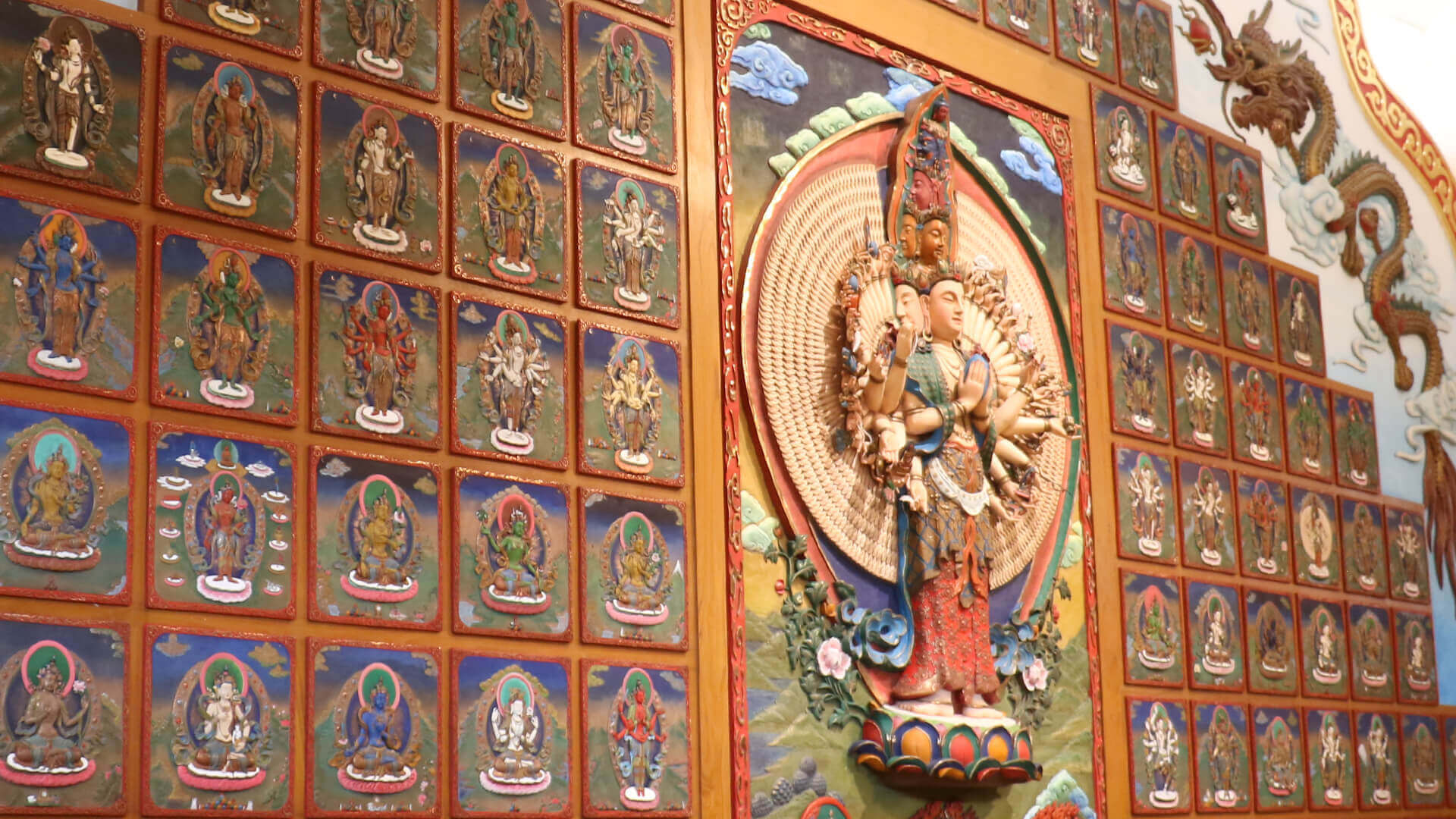
Event Contents
●Date: Saturday, December 7, 2021
Taiwan time: 10:00 - 17:00
Japan time: 11:00 - 18:00
●Venue in Taipei & Nagoya
The Ground Floor Briefing Room, National Central Library, Taipei (capacity for 50 people)
Nagoya Creston Hotel (110-capacity halved to 50 due to COVID-19)
●Format
Video Conference
●Organizers: LJM 108 Lokesvaras Cultural Foundation, the Research Center of Sinology
Implemented by the Doshisha University (the Dodai) in Japan
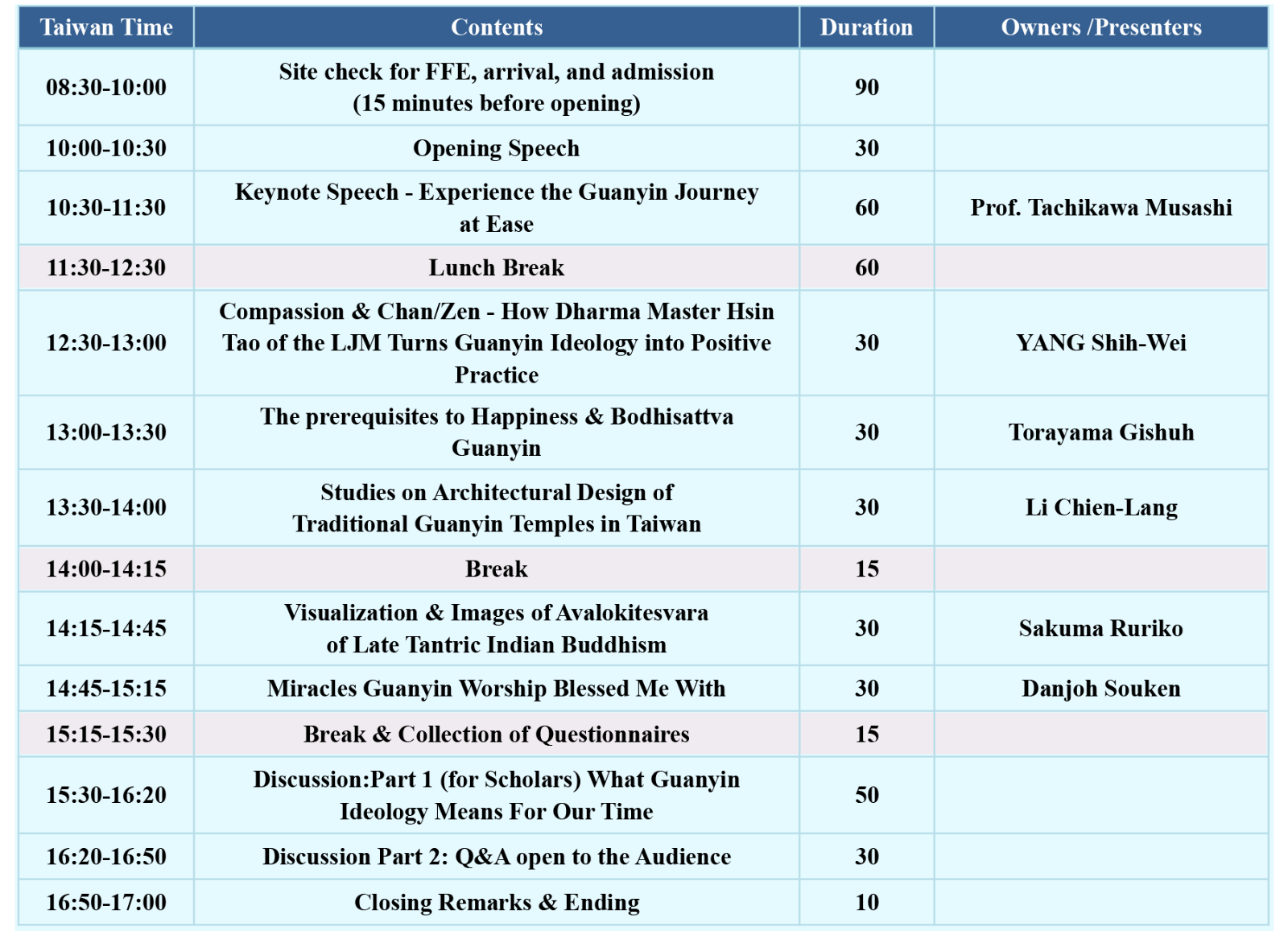
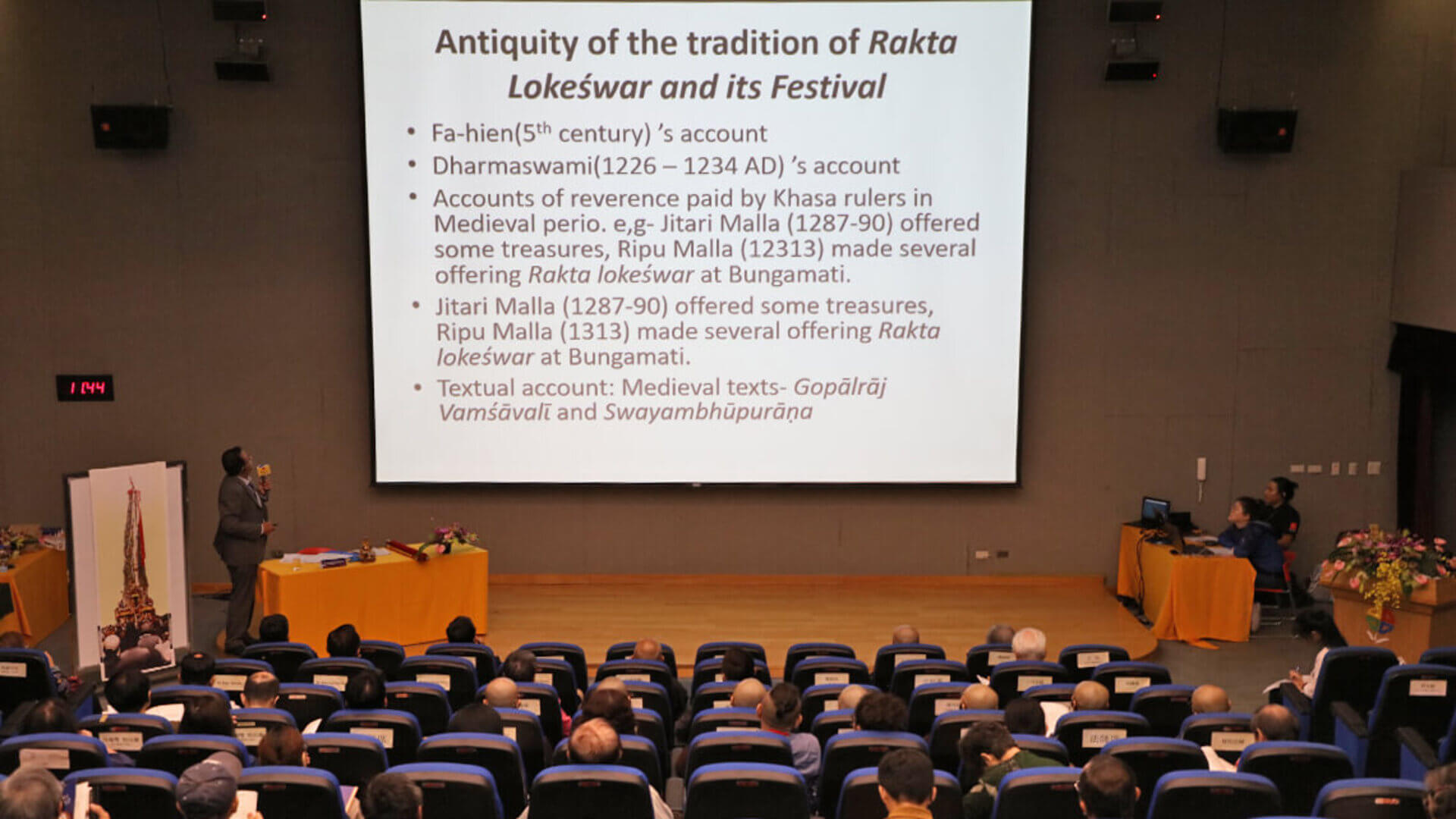
Program
●Date: December 7, 2021
●Taiwan Time: 10:00 - 17:00 / Japan Time: 11:00 - 18:00
【Program Highlights】
A. Papers & Presenters
(一)Presenter: Prof. Tachikawa Musashi, National Folklore Museum
Keynote Speech: Experience the Guanyin Journey at Ease
(二)Presenter: YANG Shih-Wei, Dharma Research Fellow, LJM
Topic 1: Compassion & Chan/Zen - How Dharma Master Hsin Tao of the LJM Turns Guanyin Ideology into Positive Practice
(三)Presenter: Torayama Gishuh, Deacon & Treasurer of Nanzenji Temple, Rinzai Sect Grand Head Temple
Topic 2: The prerequisites to Happiness & Bodhisattva Guanyin
(四)Presenter: LI Chien-Lang, Senior Committee Examiner, Research Studio for Ancient Constructions & Relics in Taiwan
Topic 4: Studies on Architectural Design of Traditional Guanyin Temples in Taiwan
(五)Presenter: Prof. Sakuma Ruriko, Osaka University of Tourism
Topic 3: Visualization & Images of Avalokitesvara of Late Tantric Indian Buddhism
(六)Presenter: Danjoh Souken, Chief Priest of Mt. Manshouzan Saikouji Temple, Rinzai Sect Myoshinji School
Topic 5: Miracles the Guanyin Worship Blessed Me with
B. Panel Discussion: What Guanyin Ideology Means for Our Time
【Speakers/Presenters】
【Panel in Taiwan】
●Panelists:
●Representative of Residential Masters of Ling Jiou Mountain
●LI Chien-Lang: Senior Committee Examiner, Research Studio for Ancient Constructions & Relics in Taiwan
●CHEN Ching-Hsiang: Professor, Department of History, Chinese Culture University
●CHENG Jih-Ming: Professor & Dean, Department of Religion, Fu-Jen Catholic University
●KAN Cheng-Zhong: Professor & Dean, Department of Buddhist Studies, Fo Guang University
●HUANG Yun-Hsih: Professor & Dean, Department of Religion & Culture, Hsuan Chuang University
【Panel in Japan】
●Host: Dr. ZHOU Xia, Ph. D
●Panelists:
Master Shuhchoh Takaoka, Advisor to the LJM 108 Lokesvaras Culture Foundation and Abbot of the Tokuriji Temple in Nagoya, Japan
Prof. Tachikawa Musashi, National Folklore Museum
Torayama Gishuh, Deacon & Treasurer of Nanzenji Temple, Rinzai Sect Grand Head Temple
Danjoh Souken , Chief Priest of Mt. Manshouzan Saikouji Temple, Rinzai Sect Myoshinji School
Prof. Sakuma Ruriko, Osaka University of Tourism
【Introcution to Speakers/Presenters】
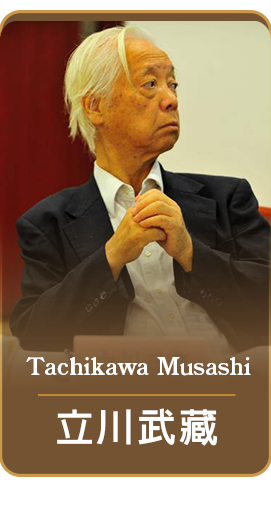
●Professor Tachikawa Musashi
Education
Department of Philosophy (Indian Philosophy), College of Literature, University of Nagoya
MA, College of Literature, University of Nagoya
Ph. D. of Indian Studies in Sanskrit, Harvard University, USA
《The Structure of the World in Udayana's Realism》
Doctoral dissertation at Harvard University: The Structure of the World in Udayana's Realism
Doctoral dissertation at Nagoya University: Ideology of the Mūlamadhyamakakārikā (MMK)
Work Experiences
Lecturer, College of Literature, University of Nagoya
Assistant Professor, College of Literature, University of Nagoya
Visiting Researcher Overseas assigned by Japan's Ministry of Education to universities abroad (Harvard, Toronto, Vienna, and Pune)
Co-Researcher, Institute of African-Asian Languages & Cultures, Tokyo University of Foreign Languages
Assistant Professor, Research Division II, National Museum of Ethnology
Guest Professor, University of California
Professor, College of Literature, University of Nagoya
Professor, Research Division V, National Museum of Ethnology
Guest Professor, University of Chicago
Professor, Department of Literature Research Science, Graduate University for Advanced Studies (SOKENDAI)
University Auditor, Graduate University for Advanced Studies (SOKENDAI)
Professor, Ethnic Society Research Division, National Museum of Ethnology
Guest Professor, Leiden University, Holland
Guest Professor, Bonn University, Germany
Guest Professor, Institute for Advanced Research for Central Japan
Professor, College of Literature, Aichi Gakuin University
Professor Emeritus, National Museum of Ethnology
Professor Emeritus, Division of Cultural Research, Graduate University for Advanced Studies (SOKENDAI)
Member(Fellow)ship / Societies
Committee member, Japan Society of Tibetan Studies
Standing committee member, Society for Vajrayana Iconography
Councillor, Society of Buddhist Ideology
Board member, East Sea Society of Buddhist Studies in Indology
Board member, Japan Society of Buddhist Studies in Indology
Board member, Japan Buddhist Society
Board member, Japan Society of Religion
Board member, Japan Society for South Asian Studies
Awards
Recognition for Special Achievement at the 3rd Asia-Pacific Award
The 50th Sino-Japanese Cultural Award
The 11th Award for Oriental Academics, Koueki Hojin Nakamura
Medal with Purple Ribbon
Order of the Sacred Treasure
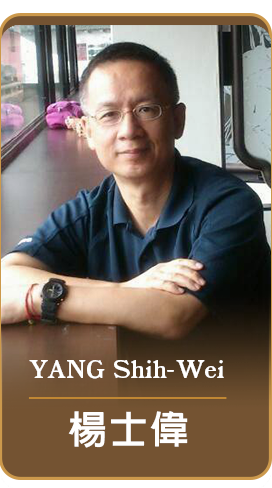
●YANG Shih-Wei
BA, MA of the Department of Philosophy, National Taiwan University. Yang worked twenty years as business manager in Taiwan and head of procurement in China for a publicly listed Taiwanese company and is presently a research fellow of the Ling Jiou Mountain Buddhist Society. Yang focuses on compilation of data on the philosophy of Dharma Master Hsin Tao and teaching materials for Chan Meditation. The focus of Yang's private studies includes the philosophy of Yogācāra school documented in Sanskrit and Japan's Kyoto School of Philosophy.
.png)
●Torayama Gishuh
Executive Director (Abbot) …..
Executive Board Member ….
Executive Director/CFO of Nanzen-ji, Head Temple of the Rinzai school
Chief Representative Board Director (Chairman), Special Non-Profit Business Intelligence Network …..
Chief Representative Board Director (Managing Direcot), Corporate Legal Person Tajimi Story Incorporated …..
Chief Representative Board Director (Publisher), Tajimi-Story incorporated…
Board Member, Non-Profit Institute of Zen Culture with business registration in Kyoto
Board Member, Nippon-Korea Liaison Council for Cultural Exchange of Buddhism with business registration in Tokyo
Representative of 東濃 at Company at the Promotion Commission for 'Heart of Japan'
Tajimi Municipality-authorized Representative for Officer Recruitment for the Ministry of Defense
Lifelong Dedications
Curating the radio program 'Mind Cultivation' at the FM PiPi every Tuesday from 13:20-13:30
(In fact, he handles the recording of the program every third Tuesday of the odd months Jan/Mar/May/July/Sept/Nov)
Live broadcasting from the 可兒 TV Studio between 5:20PM to 5:40PM on the 4th Thursday of every month
Giving four Sunday lectures on 'Mind Cultivation' every year at the Cultural & Education Forum organized by TONO Shinkin Bank
Engagement at the ‘Support Forum for Seniors’organized by the Social Welfare Division of the Tajimi Municipality
(Currently negotiating exact dates for his engagement for 10 times out of an annual total of 60 appearances)
Engagement at the Buddhist temple attached to the Hospice of Tajimi as a Gifu-County establishment, on the 4th Monday every month
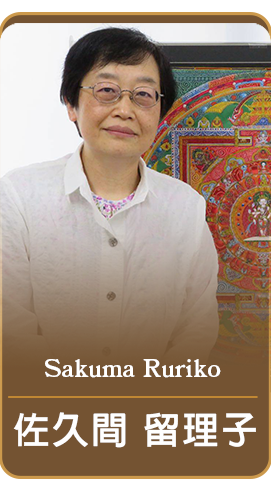
●Sakuma Ruriko
Current Position: Professor, Osaka University of Tourism
Education: Completed all courses required for post-doc research; Ph. D. of Literature, Nagoya University
Specialty: Religious studies, studies on Buddhist culture
Experiences
1995-2017, Designated Research Fellow, the Nakamura Hajime Eastern Institute
1995-2004, Co-Researcher, National Museum of Ethnology
2013, 2013,Academic Award of the 8th Tokai Association Indian and Buddhist Studies Awards
2016-2017, Specialist Commissioner, Science Research Funding Committee, Japan Society for the Promotion of Science (JSPS)
●Selected Publications
1. Asian Iconography Series III, Sādhanamālā: Avalokiteśvara section, Sanskrit and Tibetan texts (Delhi: Adroit Publisher, 2002)
2. Studies on Avalokitesvara in Indian Vajrajana, published by the 山禧房佛書林, 614 pages, 2011
3. Guanyin Pusa: Avalokitesvara the Savior in Myriad Transforming Manifestations, published by the 春秋社, 272 pages, 20154.Adelheid Mette, Noriyuki Kudo, Ruriko Sakuma, Chanwit Tudkeao and Jiro Hirabayashi, eds. Gilgit Manuscripts in the National Archives of India, Facsimile Edition. Volume II.
4. Adelheid Mette, Noriyuki Kudo, Ruriko Sakuma, Chanwit Tudkeao and Jiro Hirabayashi, eds. Gilgit Manuscripts in the National Archives of India, Facsimile Edition. Volume II.4: Further Mahāyānasūtras. (New Delhi: The National Archives of India and Tokyo: The International Research Institute for Advanced Buddhology, Soka University, 2017.)
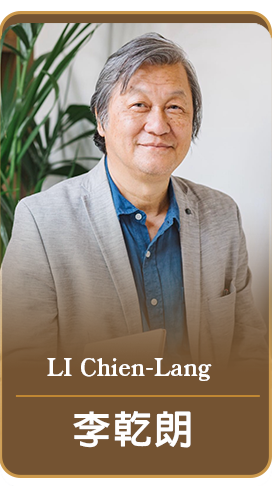
●LI Chien-Lang
Born in the historical part of old Taipei and grew up in the even older township of Tamsui, Li's keen interest in painting developed early on and he graduated from the department of architecture of the Chinese Culture University. He was inspired by celebrity intelligentia such as the late Prof. LIN Heng-Dao, artist XI Der-Jin, and the academically acclaimed architect S.C. Liang and spent a lifetime working in the field of ancient construction studies for over 4 decades. Li also taught at many universities including Tamkang, Tunghai, Fu-Jen, CYCU, National Taipei University, and National Taiwan University of Arts, on courses in the History of architecture in China and Taiwan. His dedication to the promotion of historical architecture earned him awards on various levels. Li is also the author of many books, eg. Taiwan Historical Constructions in Illustrations, Classical Chinese Architecture in Perspective, Encounter Masters on Ground Zero, etc.
●Experiences
1975 - Researcher, Environmental Science, Tunghai University
1876 - Design Assistant, Da Tang Architect & Associates
1977 - Design Assistant, Shan Yun Civil Engineering Consulting Ltd.
1978 - Research Assistant, Urban Planning, National Taiwan University
1979 - Lecturer, Department of Architecture, Tamkang University
1980-2013 - Professor, Department of Architecture, Chinese Culture University
1984 - Editor, Architects of the ROC magazine
1986 - Lecturer, Department of Architecture, Tunghai University
1987 - Chief Executive, Yen-Lo Studio for Ancient Constructions
1994-1996 - Lecturer, Department of Landscaping, Fu-Jen Catholic University
1996-1998 - Adjunct Associate Professor, Graduate School of Interior Design, CYCU
1999-2002 - Adjunct Associate Professor, Department of Social Education, Taipei Municipal Normal College
2007-2011 - Adjunct Professor, Department of Architectural Design, Shih-Chien University
2012-2015 - Guest Professor, Graduate School of Arts Management & Policy on Culture, National Taiwan University of Arts
2016-2019 - Guest Professor, Department of Antiquity Restoration, National Taiwan University of Arts
Present - Adjunct Professor, Graduate School of Taiwan Folklore Art & Cultural Assets, National Taipei University
Present - Chairman, ROC Society of Cultural Assets Conservation
●Publications
1988 - Studies on Schools of Traditional Construction Craftsmanship
1988 - Research & Findings on the Zhao Ying Temple of Yi-Lan
1992 - Research & Findings on the Long Shan Temple in Taipei
1994 - Architectural Style of Modern Constructions in Taiwan
1996 - Taiwan Constructions At-A-Glance
1996 - Understanding Historic Buildings
1996 - Construction Issues Common in Taiwan
1998 - Modern Constructions in Taiwan
1999 - Taiwan Architecture Centennial (Expanded edition)
2001 - Taiwan Constructions of the 20th Century
2003 - Illustrated Lexicon on Historic Constructions in Taiwan
2004 - Modern Taiwan Constructions in Water Color: Historic Buildings in Painting
2005 - Taiwan Constructions of the 19th Century
2008 - Masterworks by Maestros (Deluxe edition in 1 volume / paperback in 3 volumes)
2014 - Aging Historic Buildings of Taiwan: A Chronicle of Their Preservation
2017 - Reading Historic Buildings Made Easy (Expanded edition, co-author YU Yi-Ping)
2019 - Encounter Masters on Ground Zero - Appreciating The Beauty of Classic Historic Buildings in Taiwan with Drawings & In-Depth remarks by Architect LI Chien-Lang
.png)
●Danjou Souken
Born 1956 in Fukuyama
Graduated from the Ryukoku University in Kyoto
Brief stay for studies at UC-Berkeley
After returning from overseas, he practiced a meditation retreat in solitude and led a self-reliant lifestyle for over a year in the mountains of Tottori Prefecture.
After some mysterious experiences he traveled to India's yoga sanctuary in Rishikesh to study Indian philosophy (Vedanta) and Sanskrit. He had a private audience with the Dalai Lama at the famous Buddhist site, the Deer Park in Sarnath.
Experiencing the awakening of awareness in Buddhism.
After returning from India, he received Monastic ordination and practiced in the monastery of Kennin-ji in Kyoto.
For 7 years starting 1990 he was an instructor for Zen meditation practice at the Shinsho-ji in Fukuyama. His teachings reached annually more than 30,000 people who signed up to practice Zen meditation, from students of different age groups to participants from all walks of life.
He founded the Asian Center of Spirituality at Shinsho-ji and conducted seminars themed on Zen/Yoga/Qigong besides running an annual workshop of natural foods for metabolic balance.
Settling at the Saiko Zenji Temple, an affiliated temple of the Myōshin-ji school of Rinzai Zen Buddhism in 2003
He conducted a monthly lecture on ‘The School that Cultivates Compassion & Love’ at the Fukuyama Temple and the Hiroshima Temple alternately.
In 2005 he visited Boston by invitation to give a speech on Zen meditation at the World Conference on Naturally Balanced Diet curated by Michio Kushi.
He was invited to travel to Leiden in the Netherlands to participate in the 400th Anniversary of Trade between Holland and Japan in May, 2009, and started to hold meditation seminars and Buddhist functions at the Siebold Memorial Museum in Nagasaki every year.
He planted a 'Chinese Parasol Tree 2.0 after the A-Bomb in Japan' in the Leiden Botanical Garden as the 2nd of its kind in Europe and received widespread media response in the Netherlands. The intent was to symbolize a prayer for world peace and the disarmament of nuclear weapons.
In 2009, he went to Buddha's birthplace in Lumbini, Nepal, with five fellow travelers to plant seeds from Bodhi trees in the Hiroshima Peace Park to symbolize prayers for world peace.
Between 2012 and 2019, he traveled annually to Santa Barbara in California to conduct workshops on meditation and natural diet for metabolic balance. Working together with some UC Santa Barbara professors, he also curated workshops on mindfulness every year to promote compassion.
April 22, 2018
He staged a meditation at the UN headquarters for world peace in conjunction with WED (World Environment Day).
October, 2018
He had a private audience with the 14th Dalai Lama, who is generally believed to be a reincarnation of Bodhisattva Avalokitesvara, at the official venue and seat of the government of Tibet in exile at Dharamshala, India.
He participated in the Japanese Festival in Leiden, the Netherlands, in 2018, and made all-out efforts to share and spread out Japanese culture.
●Publications
The Heart Sutra (with CD)
Wanting to be even more gentle than is (Bilingual in Japanese and English, with excerpts of speeches given in Santa Barbara)
Therapy with Spiritual Music - A series with CD
The World of Spiritual Music for Buddhist Chants
And others more.
#Remarks
The organizers reserve the right to edit,modify,or terminate details of program contents.
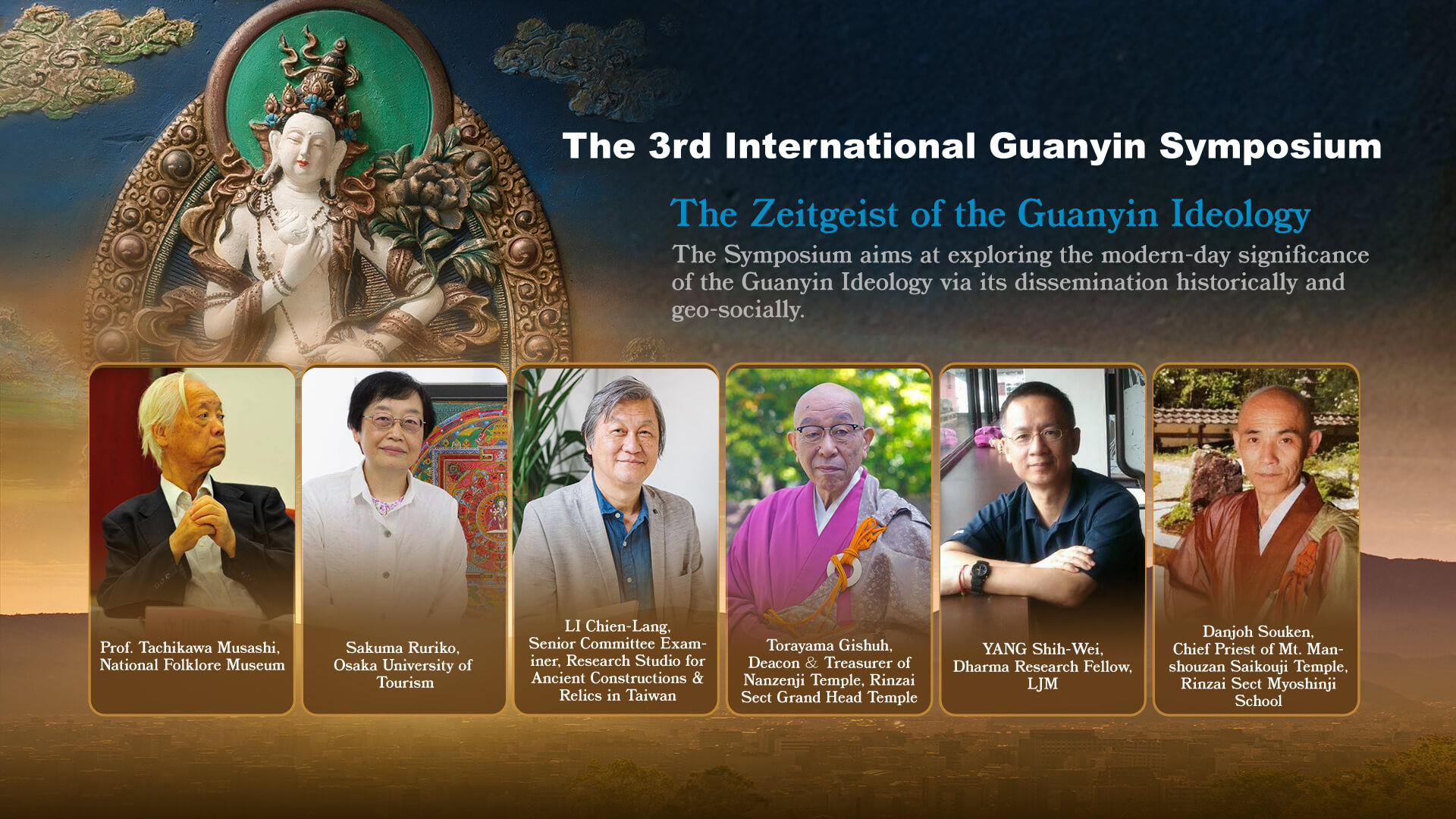
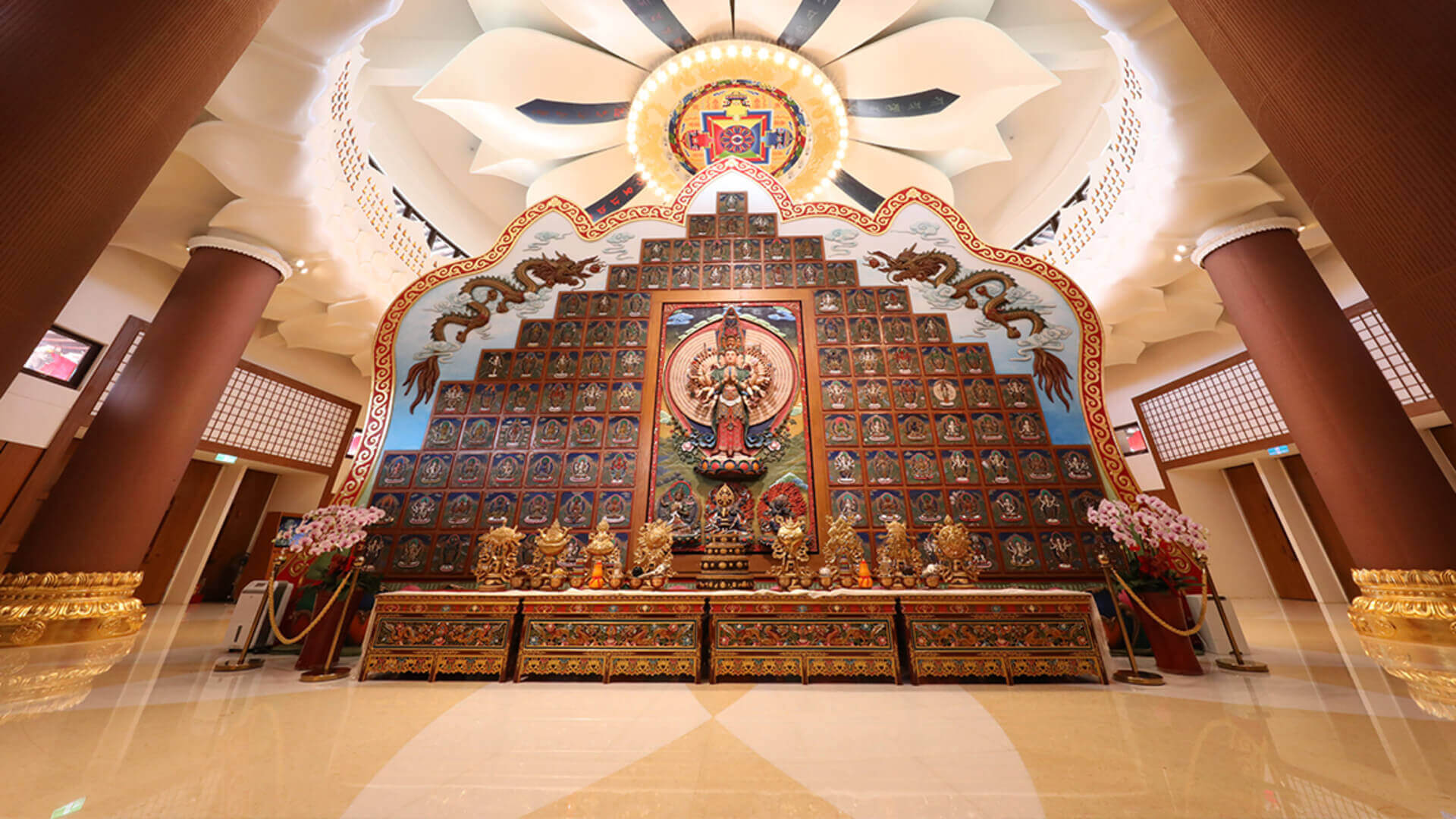
.png)
